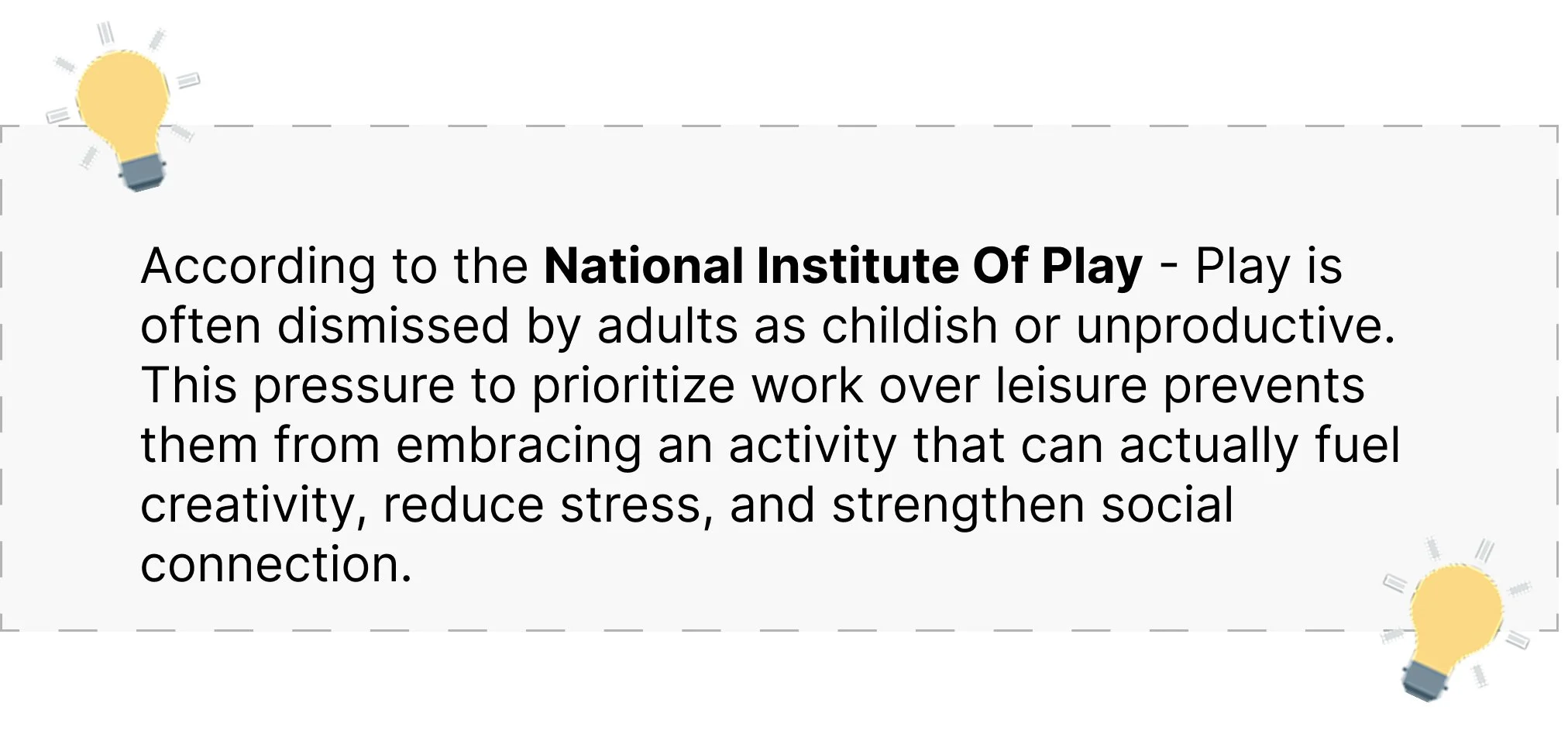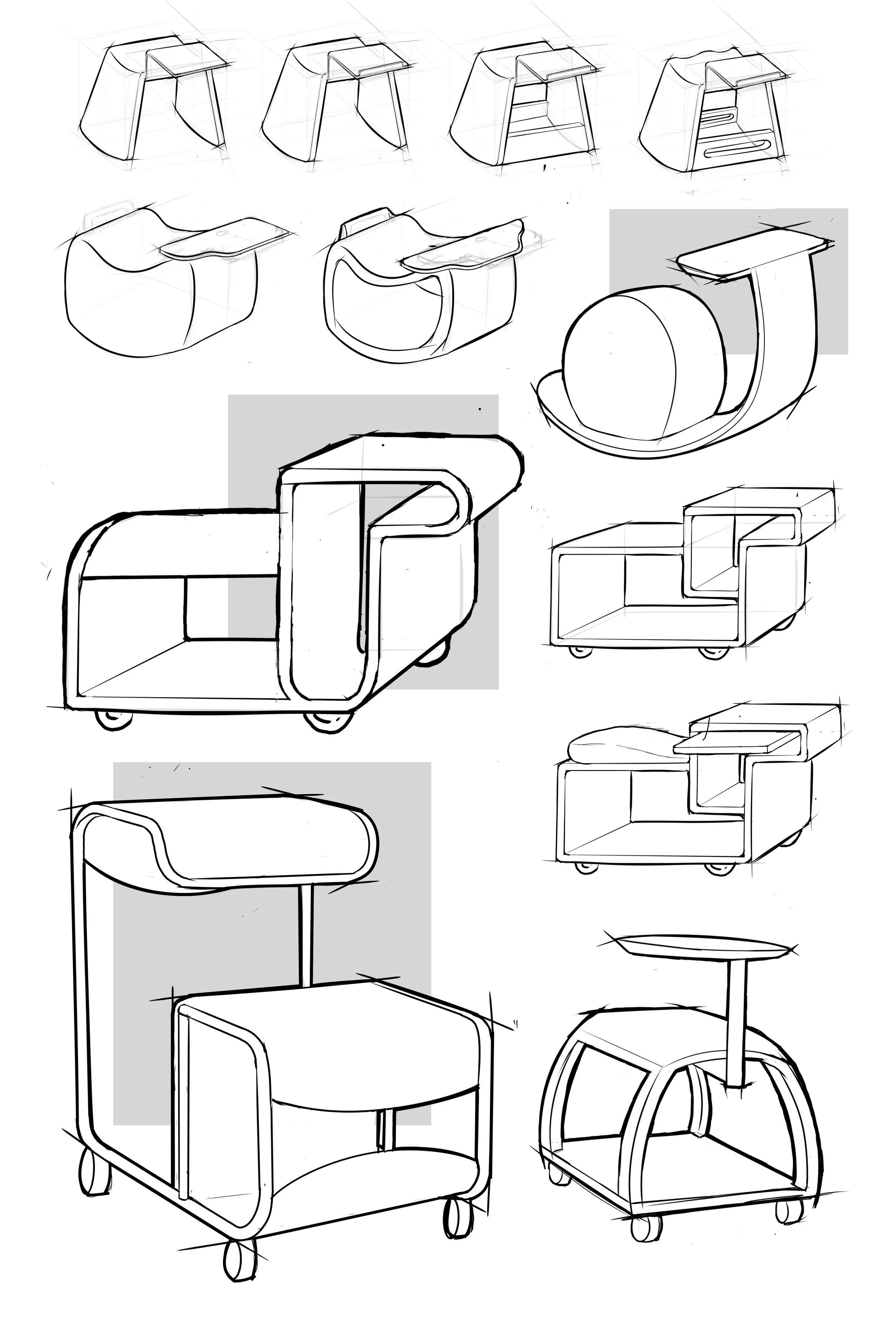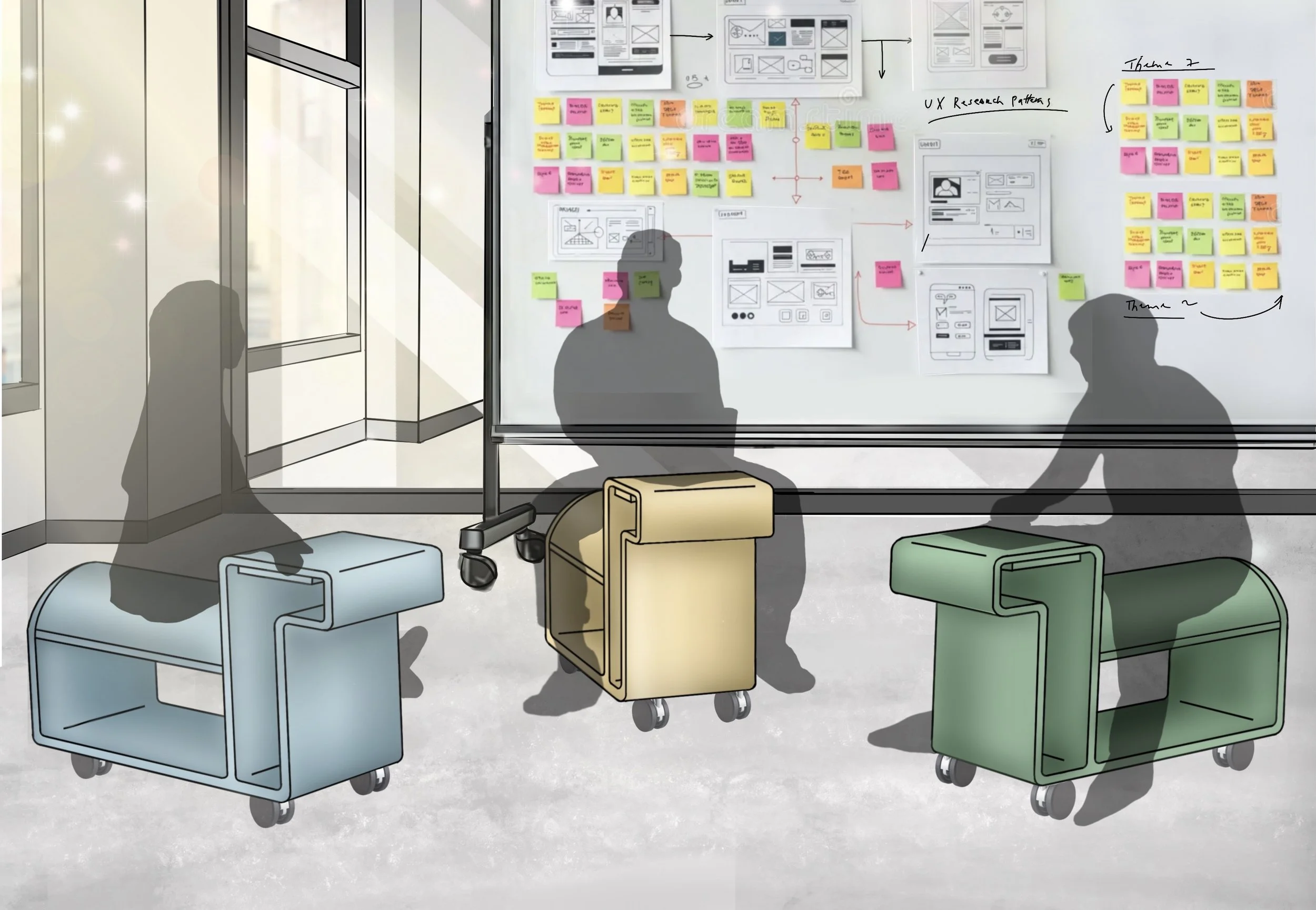Roli
What if studying felt less like a chore and more like play? Reimaging student workspaces by blending movement, function, and childhood-inspired design.
-
Brief Overview
Problem Statement
HMW Statement
User Research
Research Analysis
Concept Development
Final Product Outcome
Learning Outcomes
-
Human-Centered Research
Play as a Design Tool
Function and Experience
The Role of Environment in Behavior
Design Thinking
Behavioral Mapping
-
SolidWorks (3D Modeling)
KeyShot (Rendering)
Procreate (Sketching)
Adobe Photoshop (Editing)
Problem Statement
Post-class study spaces are often filled with rigid chairs and static desks that signal seriousness and structure. While functional, this traditional setup creates pressure, discourages movement, and makes studying feel heavy and isolating. For students who want to brainstorm, collaborate, and learn together, these environments can stifle creativity and connection.
How Can We Statement
How might we transform rigid study spaces into dynamic, fun environments that inspire students to connect, share ideas, and learn together?
Research & Insights
Understanding How Space Feels
To validate my assumptions, I wanted to conduct user interviews to understand how students actually study in collaborative environments and how furniture influences their behaviors, focus, and overall well-being. By talking directly with students, I could uncover the subtle frustrations or positive experiences that are often overlooked - such as how static furniture might increase stress or how playful, flexible seating can encourage more open collaboration. These insights ensure that the design is rooted in actual user needs rather than abstract market trends.
Research Analysis
For The Deep Thinkers
Studying isn’t just about focusing on material - it’s about feeling mentally and physically at ease. Rigid study environments often signal that work must be serious and structured, which can create stress and limit spontaneous collaboration. To better understand these dynamics, I also created an empathy map to capture how comfort, emotions, and social interactions shape students’ behaviors. The map revealed that discomfort and lack of flexibility often lead to pressure and disengagement - while adaptable, inviting spaces foster ease, collaboration, and creative thinking. The key insight was that the furniture & environment directly influences students’ mindset - shaping whether study feels restrictive or empowering.
Concept Development
Roli Sketching Exploration
In my early sketches, I explored playful forms because I wanted the design to immediately evoke a sense of lightness and creativity. Rounded, toy-like shapes not only soften the seriousness of traditional study furniture but also trigger nostalgic memories of childhood play. This intentional form language helps reduce the pressure students often feel in academic settings, making the stool feel approachable, inviting, and fun. By starting with play as a design driver, the sketches set the foundation for a piece of furniture that encourages movement, collaboration, and a more relaxed mindset toward studying.
Roli
Rethink external storage by combining the familiarity of folders with the functionality of a multi-bay dock. The result is a simple, intuitive system that makes working across projects seamless and stress-free.
Reflection & Next Steps
Reflections On Learning Beyond The Desk
This project taught me that studying isn’t just about the material itself - the environment and furniture play a powerful role in shaping how students feel, think, and collaborate. I learned that static, rigid setups often increase stress and disengagement, while playful, adaptable furniture can spark creativity, reduce pressure, and make collaboration feel natural. My next steps would be to refine the ergonomics through user testing - experimenting with seat height, width, and proportions to ensure long-term comfort.











